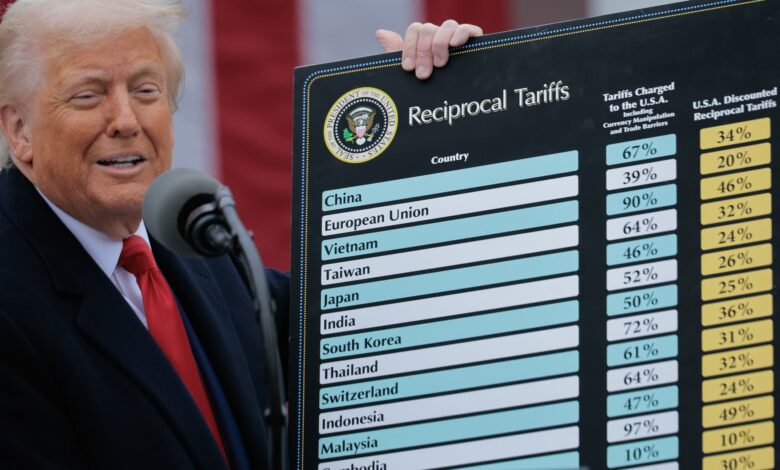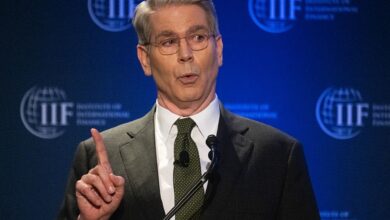Trump’s tariff rates for other countries larger than World Trade data

U.S. President Donald Trump speaks during an event announcing new tariffs in the Rose Garden at the White House in Washington, April 2, 2025.
Chip Somodevilla | Getty Images
President Donald Trump unveiled a bold “reciprocal” tariff strategy, sparking debate among economists and trade partners about the accuracy of the rates set by the White House.
Trump’s plan introduced a 10% baseline tariff for most countries, with higher rates imposed on nations like China, Vietnam, and Taiwan. During a ceremony in the Rose Garden, Trump displayed a poster board illustrating the tariffs the U.S. believes are levied against it, along with the corresponding “discounted” tariffs the U.S. would enforce in retaliation.
The reciprocal tariffs proposed by the Trump administration are roughly half of what the U.S. claims other countries charge. For instance, the poster indicated that China imposes a 67% tariff, prompting the U.S. to suggest a 34% reciprocal tariff.
However, a report from the Cato Institute contradicted these figures, citing lower trade-weighted average tariff rates in most countries based on data from the World Trade Organization.
According to the Cato Institute, China’s 2023 trade-weighted average tariff rate was 3%, significantly lower than the 67% claimed by the administration.
The EU, which the administration said imposes a 39% tariff, actually had a trade-weighted average tariff rate of 2.7% in 2023 according to the Cato report.
Similarly, while the administration stated that India’s tariff on the U.S. was 52%, Cato’s findings revealed a 12% trade-weighted average tariff rate for India in 2023.
Social media users pointed out that the Trump administration’s tariff calculations seemed to be based on dividing the trade deficit by imports from each country, an unconventional method that excludes trade in services.
The Office of the U.S. Trade Representative defended this approach, stating that it aimed to balance trade deficits by computing tariff levels to counteract existing policies and fundamentals.





